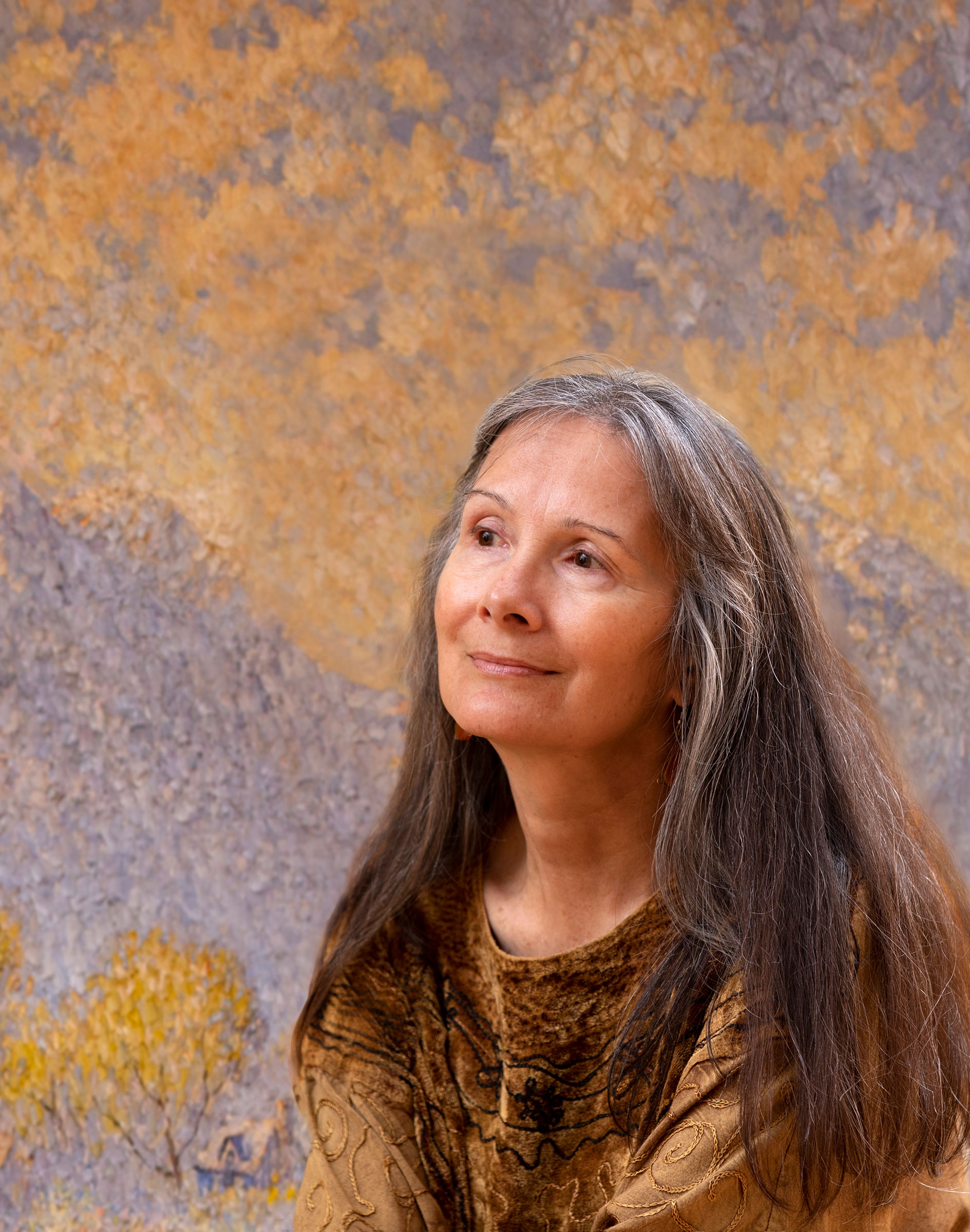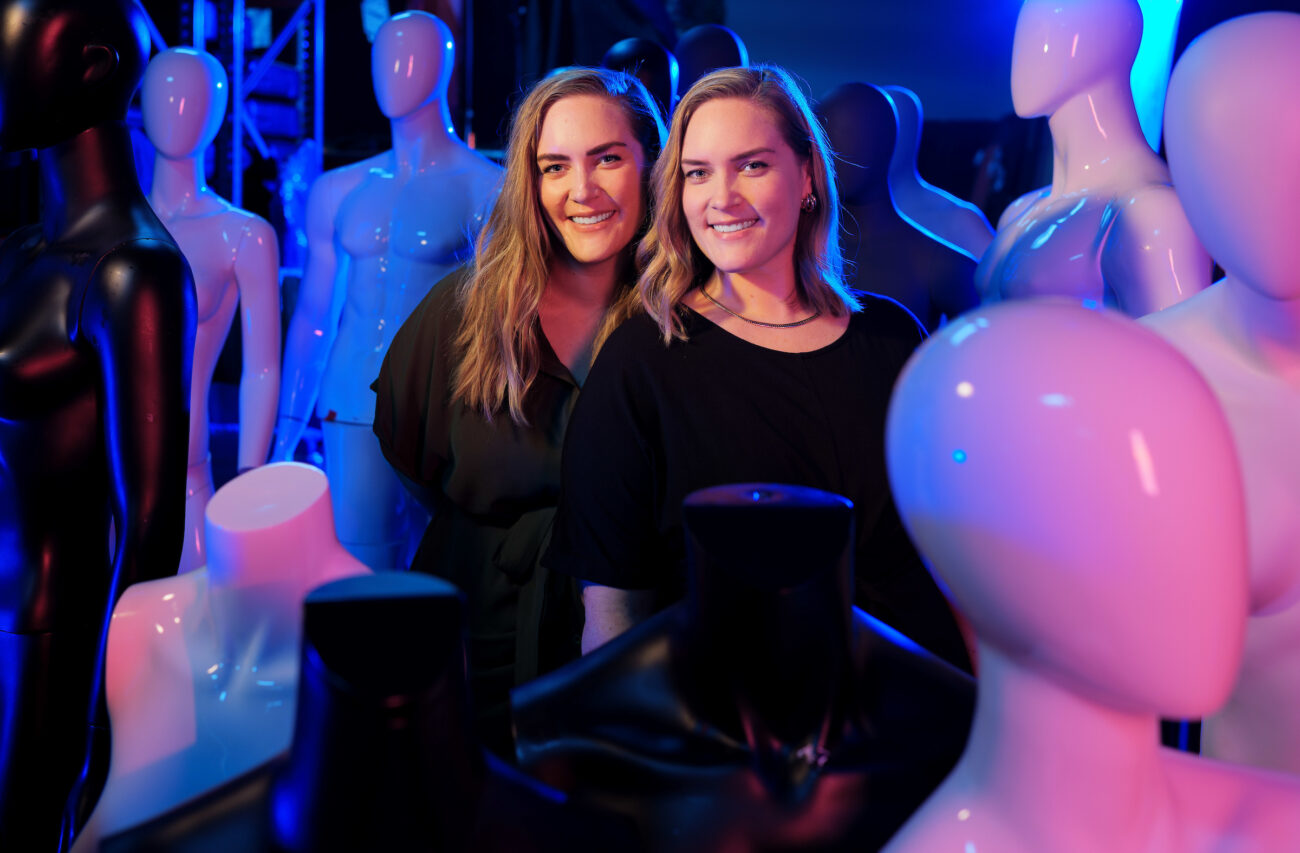O (My) Pioneers!
When photographing Nadene LeCheminant, there was the usual joking about “making me look good,” but then she made an unusual request: “Don’t Photoshop out my gray hair.”
LeCheminant, who graduated from Utah State University with degrees in history and art in ’84 and ’97, was on campus for a day to talk about her new book, The Gates of Eden, a historical novel that chronicles one of the first Mormon handcart parties. She says her three years of research about these early converts to the Church of Jesus Christ of Latter-day Saints gave her a new appreciation for what it meant to be a pioneer—scars, wrinkles, gray hair and all.
What made you want to write this book?
Nadene LeCheminant: I was always intrigued by the colorful stories of my ancestors. For example, one ancestor was romanced by Joseph Smith. But the story of my great-great-grandmother, Mary Ann Barton Allen, was the most intriguing. She was an English girl who pulled a handcart to Utah and ended up as the child bride of a much older polygamist. And although my novel doesn’t follow the arc of her life, it was her story of hope and survival that inspired me.
What do you think motivated these colonizers to risk everything to settle in what was nothing but a barren desert at the time?
NL: Many handcart pioneers had been impoverished. They were teetering on the edge of survival in the slums of Victorian England, and I think they wanted an anchor. They wanted some sense of security, and they found that in their faith. But many were suffering from hunger and I think they also were attracted by promises of abundance—the Promised Land. We don’t think of Charles Dickens and the Utah handcart pioneers in the same breath, but perhaps we should.
You say that in researching this book you walked portions of the Mormon Trail. What portion stood out?
NL: I remember the scene at Hogsback Summit, near Henefer, Utah. The pioneers had already walked more than 1,200 miles, and they thought they were almost there. When I came up over the crest of a hill, following the handcart ruts, I could see the jagged peaks of the Wasatch Mountains jutting up into the sky across this expansive horizon. You can’t see a pass, and there’s snow on the mountains and autumn is coming on. Historians dub this spot Heartbreak Ridge because so many pioneers just broke down and wept.

What was it like for you?
NL: It was profoundly moving to follow her footsteps. I felt a small sense of her lived experience, although I can’t imagine going through some of her hardships. I think people in Utah sometimes mythologize the handcart pioneers. They are larger-than-life characters. But if we lose our ability to understand them as humans, if we lose the nuance, we lose our ability to be astonished at what they did, to feel awe, and to be moved to tears by their courage. So I wanted to bring them down out of the clouds and make them real people. And in my novel not all Saints were saints, but I didn’t want to have any characters who were villains. I wanted everyone to have a backstory.
Including the Latter-day Saints involved in the massacre at Mountain Meadows?
NL: Yes. When you talk about the Mountain Meadows massacre, you can never excuse what happened, but I wanted readers to understand that these were men who had been chased from state to state to state. They had their homes and orchards burned, their women violated, their family members killed. They were formed in a cauldron of violence, and they responded with violence. People are complicated creatures, and I think when we look at history we need to look more at the gray, in-between places, rather than the black and white. I didn’t want to cast judgment. I wanted to write with honesty, but also with compassion.
In your story, Josephine, whose character is based on your great great- grandmother, is cared for by a family from Cedar City. Within months she is married to the man of the house who says he was commanded to take her as his second plural wife, even though she was only 16. It was difficult to read that, in part, because of her dubious consent.
NL: She wasn’t forced, but she also didn’t have a lot of options. When I began to write, I didn’t know where this story would lead, so I just followed my fictional characters. I read hundreds of pioneer journals and 19th-century newspapers and letters, and also imagined my great-great-grandmother’s life. I think a lot of times people talk about polygamy as a sacred covenant, but we don’t follow people into the parlor. We don’t follow them into the bedroom. And I wanted to show real people trying to grapple with this. It was not an easy life.
Was it the same for your great great-grandmother?
NL: Well, she was 15. She was looking for a home. She says that she was standing on the street in Salt Lake City after she arrived, waiting for someone to ask her home with them. She was looking for security, and in that shuffle for security, she ended up as a second plural wife within several months.
Your characters are fictional, with the exception of several historical individuals, including Brigham Young. Most of your characters are also multi-faceted. Would you call him a complicated person?
NL: Yes! One thing that amazed me when I was doing my research was the organizational genius of Brigham Young. He was a paradox—a folksy, affable man who also could be crude and callous and vengeful. But above all, he was an incredible visionary. Fewer than one in 10 million individuals could have led tens of thousands of mostly poor people across an ocean, over the Rocky Mountains on foot or by wagon, and across a desert to one of the most remote places on Earth. He settled them in a wilderness where there was absolutely no infrastructure and told them to start digging irrigation ditches and planting corn. His genius was the foundation for all these now flourishing communities, including Logan.
What surprised you most from your research?
NL: When we think of the Westward Expansion and the settlement of the West, we often have visions of rugged individualism—young men striking out on their own in search of gold or farm families headed to Oregon. They banded together in wagon trains for protection, kind of like traveling forts, but it was essentially an individual or small-scale enterprise. I was surprised at how different the Mormon Exodus was. Their westward migration was a massive community effort. They planted crops and established ferries to help those who came after them, and settlers in Utah loaned wagons and ox teams to help bring new immigrants west. The Latter-day Saint pioneers were a uniquely cohesive group, which contributed to their emotional resilience. They were sometimes heartbroken, they sometimes doubted, they were traumatized by harsh experiences, but above all, they were resilient.
By John DeVilbiss
Learn more about The Gates of Eden at www.nadenelecheminant.com.





